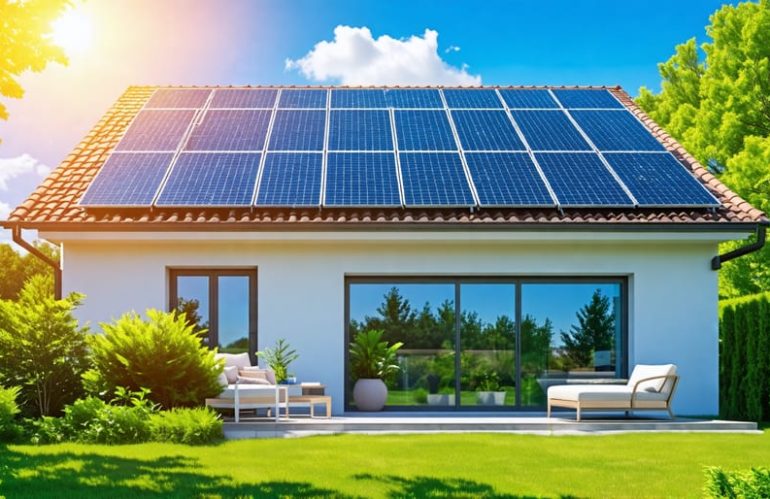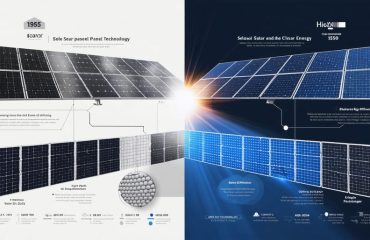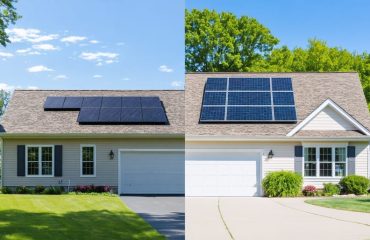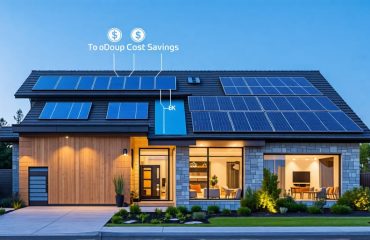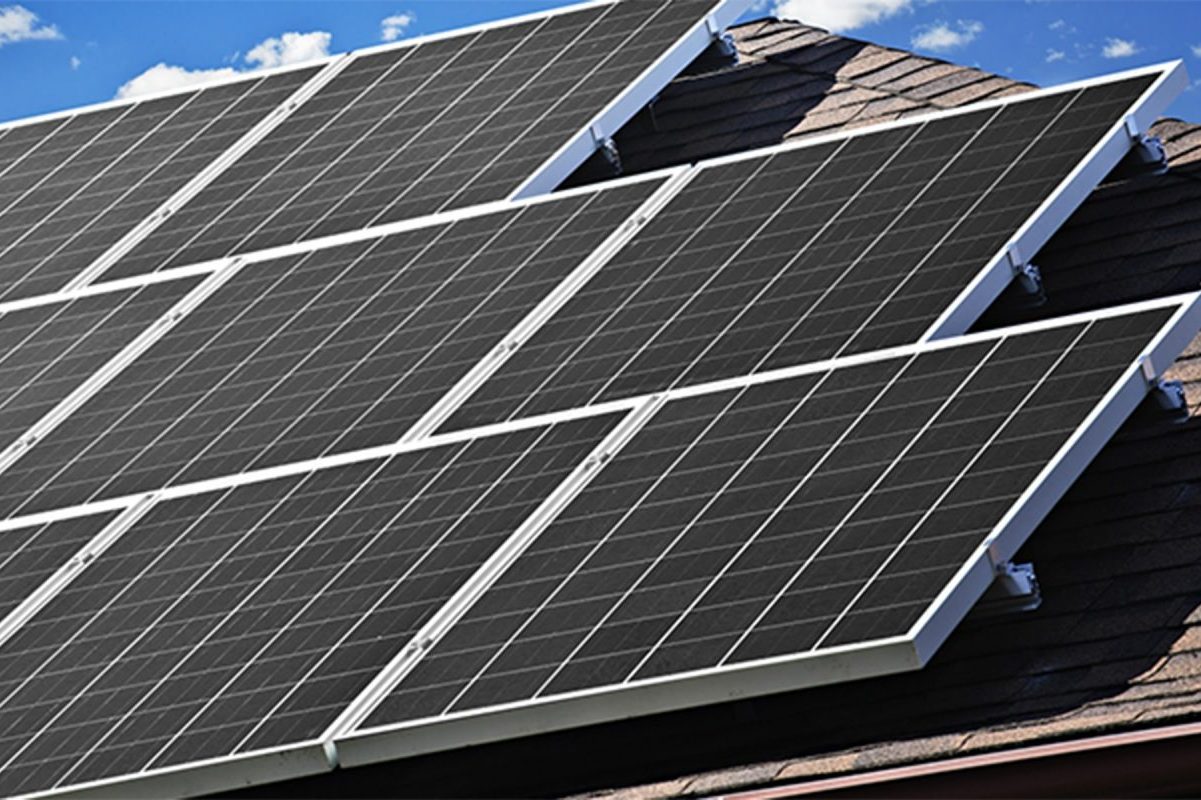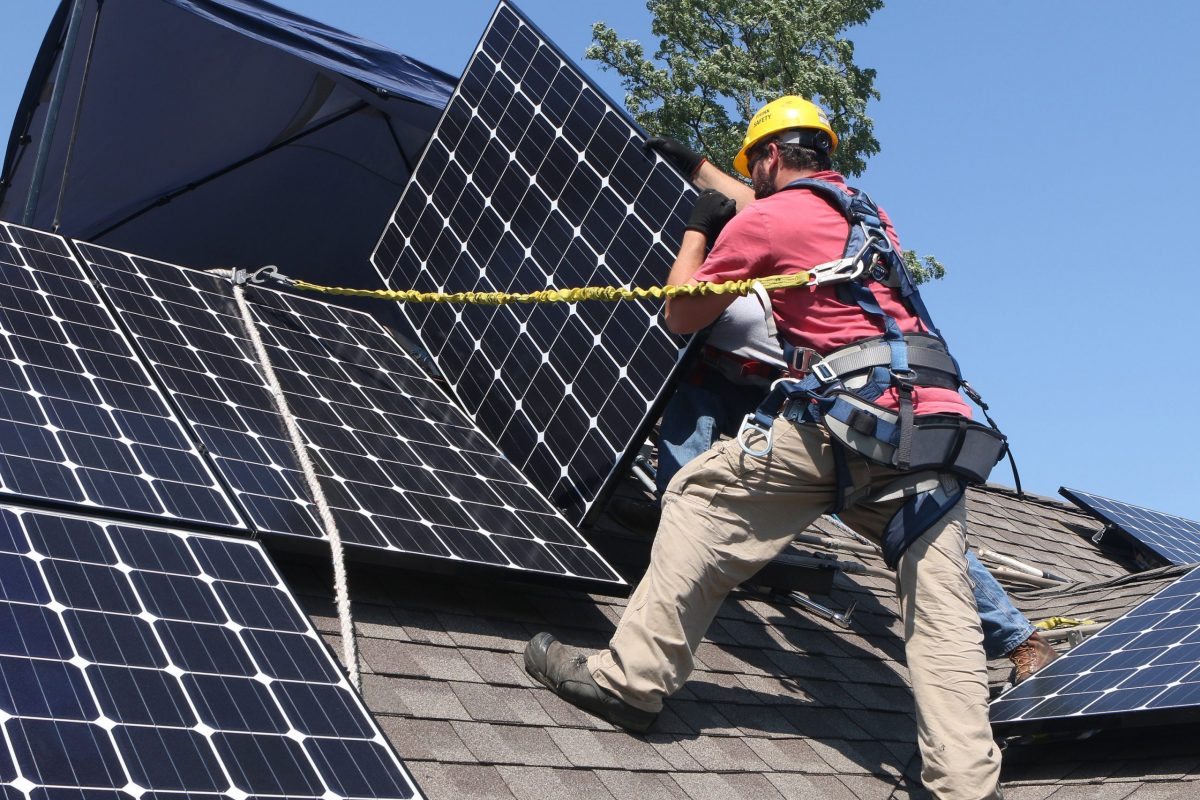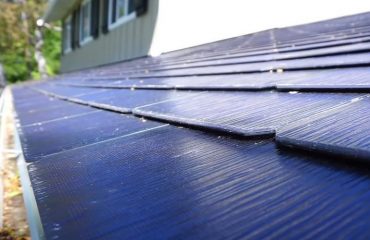Harnessing the sun’s power is a smart, sustainable choice for homeowners seeking energy independence. With several solar panel options available, understanding their key differences is crucial for making an informed decision. This article provides an in-depth comparison of the most common residential solar panel types – monocrystalline, polycrystalline, and thin-film. We’ll explore factors like efficiency, cost, aesthetics, and special considerations to help you choose the best fit for your home and energy needs. Whether you’re driven by maximizing savings, reducing your carbon footprint, or enhancing your property value, discovering the right solar panel technology is the first step toward a brighter, greener future.
Monocrystalline Solar Panels
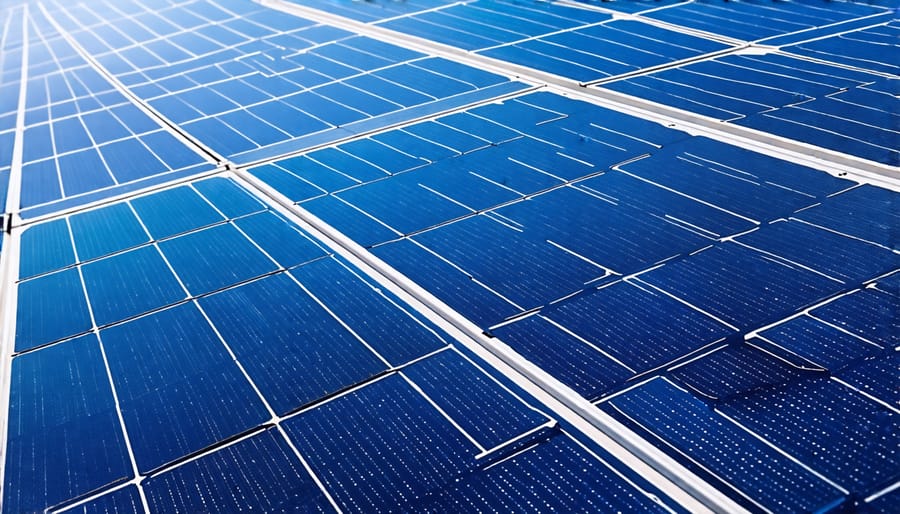
Efficiency and Performance
Monocrystalline solar panels are renowned for their high efficiency and performance, making them an excellent choice for homeowners looking to maximize their energy output. These panels are made from a single, pure crystal of silicon, allowing for better electron flow and higher energy conversion rates. Monocrystalline panels typically have efficiencies ranging from 17% to 22%, which means they can generate more electricity per square foot compared to other types of solar panels. This increased efficiency translates to more energy savings and a quicker return on investment for homeowners. Additionally, monocrystalline panels perform well in low-light conditions and high temperatures, ensuring consistent energy production throughout the day and across various weather conditions. With their superior efficiency and performance, monocrystalline solar panels are an ideal option for those seeking to optimize their solar energy system and reap the maximum benefits of going solar.
Aesthetics and Space Requirements
When it comes to aesthetics and space requirements, monocrystalline solar panels are the clear winner. Their sleek, uniform appearance and black hue make them a visually appealing choice for homeowners who want to maintain their home’s curb appeal while embracing renewable energy. The sleek appearance of monocrystalline panels blends seamlessly with most roof types, making them a stylish and discreet addition to any home. Furthermore, monocrystalline panels are more compact and space-efficient compared to their polycrystalline counterparts. This means you can generate more power with fewer panels, saving valuable roof space and allowing for more flexibility in panel placement. If you have limited roof space or want to minimize the visual impact of your solar installation, monocrystalline panels are an excellent choice that combines style and functionality.
Cost Considerations
While monocrystalline solar panels have a higher upfront cost compared to polycrystalline and thin-film options, they offer significant long-term savings. Their superior efficiency means you’ll need fewer panels to generate the same amount of electricity, reducing installation costs. Additionally, monocrystalline panels have a longer lifespan, typically lasting 25-30 years or more. Over time, the higher initial investment is offset by the increased energy production and durability. When considering the total cost of ownership, monocrystalline panels often provide the best value for homeowners seeking to maximize their solar investment and enjoy substantial energy savings for decades to come.
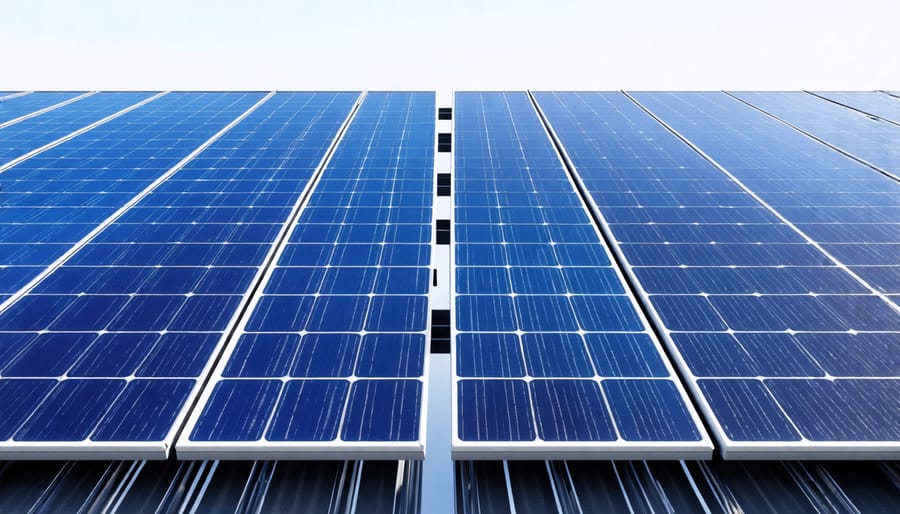
Polycrystalline Solar Panels
Affordability and Value
When it comes to affordability, polycrystalline solar panels offer an excellent value proposition for homeowners looking to embrace solar energy without breaking the bank. These panels are generally less expensive than their monocrystalline counterparts, making them an attractive option for budget-conscious consumers. Despite their lower cost, polycrystalline panels still deliver reliable performance and energy savings over time. While they may be slightly less efficient than monocrystalline panels, the difference in overall energy production is often negligible for most residential applications. By choosing polycrystalline panels, homeowners can enjoy the benefits of clean, renewable energy while keeping initial installation costs down. This affordability factor makes solar power more accessible to a wider range of households, empowering more people to reduce their carbon footprint and save money on their energy bills in the long run.
Efficiency and Performance
While polycrystalline solar panels are slightly less efficient than their monocrystalline counterparts, typically achieving 13-16% efficiency, they still provide a reliable and cost-effective solution for most residential applications. The difference in efficiency is often negligible in real-world settings, and polycrystalline panels can still generate a significant amount of clean energy for your home. In fact, many homeowners find that the lower upfront cost of polycrystalline panels outweighs the minor efficiency difference, making them an attractive option for those looking to maximize their return on investment.
Durability and Longevity
Polycrystalline solar panels are known for their durability and long lifespan, making them a reliable choice for homeowners seeking a sustainable energy solution. These panels are built to withstand harsh weather conditions, including high winds, heavy rain, and even hail. The robust construction of polycrystalline panels ensures that they can endure the test of time, often lasting for 25 years or more with minimal maintenance. This longevity is a testament to the quality of materials used in their manufacturing process, as well as the rigorous testing they undergo before being released to the market. When investing in polycrystalline solar panels, homeowners can have peace of mind knowing that their investment will continue to generate clean energy for decades to come, ultimately leading to significant long-term savings on their energy bills.
Thin-Film Solar Panels
Flexibility and Versatility
Thin-film solar panels offer unparalleled flexibility and versatility compared to their crystalline counterparts. Composed of ultra-thin layers of photovoltaic material, these lightweight panels can be seamlessly integrated into various surfaces, such as rooftops, facades, and even curved structures. This adaptability makes thin-film panels an excellent choice for unique architectural designs and space-constrained installations. Moreover, their lightweight nature simplifies transportation and installation, reducing overall project costs. Thin-film panels also perform well in low-light conditions and high temperatures, making them suitable for a wide range of climates. With their diverse applications and adaptability, thin-film solar panels provide homeowners with a flexible and versatile solution for harnessing solar energy, empowering them to embrace sustainable living and reduce their carbon footprint.
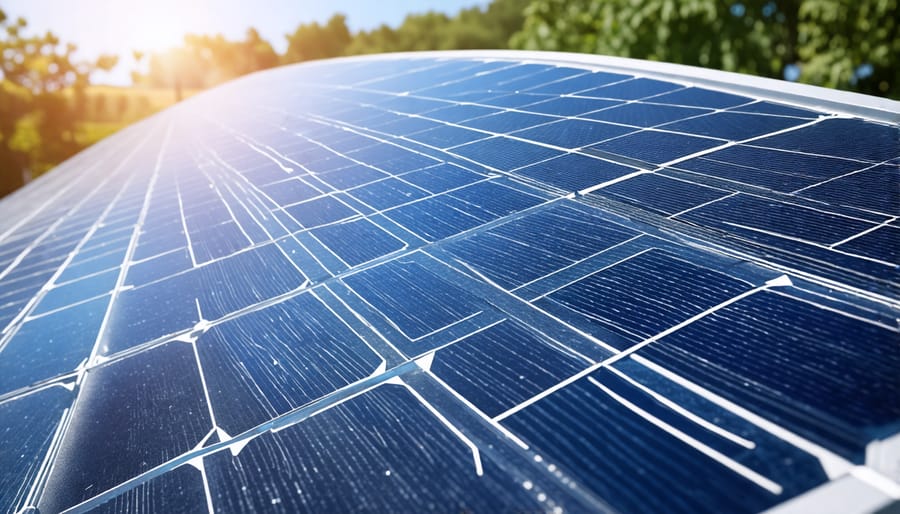
Efficiency and Performance Considerations
While thin-film solar panels offer several advantages, such as flexibility, lightweight design, and better performance in low-light conditions, they typically have lower efficiency rates compared to crystalline options. Monocrystalline and polycrystalline panels can reach efficiency levels of 20-25%, whereas thin-film panels generally fall in the 10-15% range. This means that thin-film panels require more space to generate the same amount of electricity as their crystalline counterparts. However, the gap in efficiency is gradually narrowing as thin-film technology improves. Homeowners with limited roof space may prefer the higher efficiency of crystalline panels, while those with ample space or unique installation requirements may find thin-film panels to be a suitable choice. Ultimately, the decision between thin-film and crystalline panels depends on factors such as available space, budget, and specific energy needs.
Factors to Consider When Choosing Solar Panels
Energy Needs and Available Space
Before investing in solar panels, it’s crucial to assess your home’s energy needs and available roof space. Determine your average monthly electricity consumption by reviewing past utility bills. Next, evaluate your roof’s solar potential by considering its size, orientation, and shading. South-facing roofs with minimal shading are ideal for maximizing solar energy production. Use online tools or consult a professional to estimate the energy requirements and solar panel system size that best fits your home. Keep in mind that the number and type of solar panels you need will depend on factors such as your energy goals, budget, and available space. By accurately assessing your energy needs and roof space, you can select the most suitable solar panel type and configuration for your home, ensuring optimal performance and long-term savings.
Budget and Long-Term Savings
When comparing solar panel types, it’s crucial to consider both upfront costs and long-term savings. Monocrystalline panels typically have a higher initial price tag due to their superior efficiency and sleek appearance. However, their enhanced performance often translates to greater energy savings over time. Polycrystalline panels are generally more affordable upfront, making them an attractive option for budget-conscious homeowners, while still offering reliable performance and long-term financial benefits. Thin-film panels, although less efficient, can be the most cost-effective choice for large-scale installations or projects with unique space constraints. Ultimately, the best choice depends on your specific budget, energy needs, and long-term goals. By carefully evaluating the initial investment and projected savings, you can select the solar panel type that optimizes your financial returns while contributing to a more sustainable future.
Aesthetics and Home Design
When choosing solar panels for your home, it’s essential to consider their visual impact on your property. Monocrystalline panels offer a sleek, uniform appearance with their black hue and rounded edges, making them a popular choice for those prioritizing aesthetics. Polycrystalline panels have a blue, speckled look that some find less appealing, but they can still blend well with various roof types. Thin-film panels are the most discreet, as they can be integrated into roofing materials or designed to resemble traditional shingles. Ultimately, the right choice depends on your personal taste and your home’s architectural style.
Conclusion
In conclusion, when choosing the best solar panel for your home, it’s essential to understand the key differences between monocrystalline, polycrystalline, and thin-film panels. Monocrystalline panels offer the highest efficiency and sleek aesthetics, while polycrystalline panels provide a balance between cost and performance. Thin-film panels, although less efficient, can be an excellent choice for unique installations or low-light conditions. Ultimately, the best solar panel type for you will depend on your specific needs, budget, and priorities. By carefully assessing these factors and consulting with a professional installer, you can make an informed decision that maximizes the benefits of solar energy for your home and the environment.

